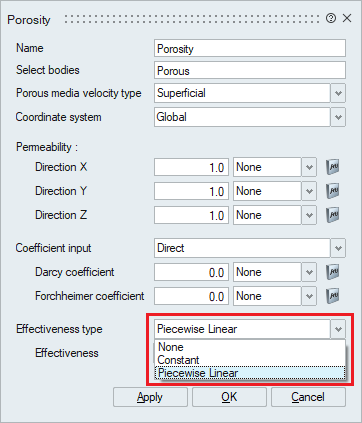Porosity
![]()
This option defines a porous medium by specifying a porosity model for the flow equation.
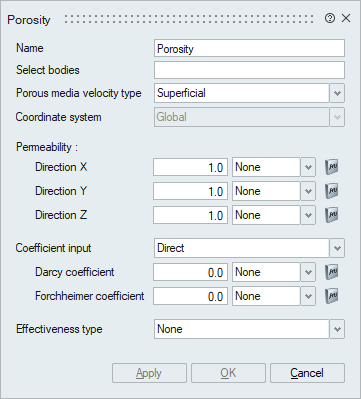
Description
- Select bodies
Select the bodies to define porous media using the Select bodies option.
- Porous media velocity type
- Superficial
- Physical
For superficial type, velocity is calculated based on volumetric flow rate and the cross section. For physical type, a more accurate representation of velocity inside the porous media can be obtained by solving the continuity and the momentum equation using the intrinsic/physical averaging method.
- Permeability
Permeability is a measure of the ease of flow of a fluid through a porous medium. The values in each of the directions depending on the selected coordinate system can be specified under the respective options.
- Coordinate system
Porosity can be defined in Cartesian, Cylindrical and Spherical coordinate systems. A local coordinate system needs to be created to define Porosity for a body that is not aligned with the Global coordinate system. Global coordinate system (cartesian) is the only available option unless a local coordinate system is created using Create Coordinate System option.
- Porous Media Definition in Cartesian Coordinate
SystemThe porous media in cartesian coordinate system can be defined in two ways:
- Use the default Global option
if the body is aligned with Global coordinate
system.
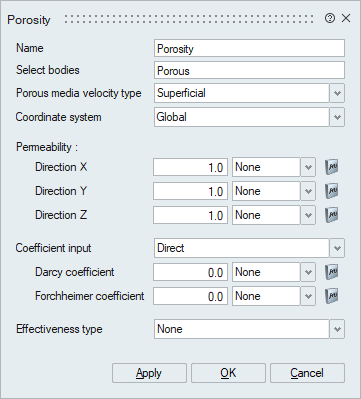
When the default Global coordinate system is selected, the values of permeability in the X, Y and Z directions can be mentioned.
- Create a local cartesian coordinate system if the
body is not aligned with the Global coordinate
system. In this case, a local coordinate system
needs to be created and has to be used in the
Porosity panel.
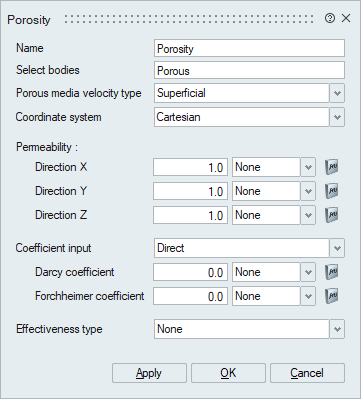
When a local cartesian coordinate system is used, the permeability direction options are along X, Y and Z directions in the local coordinate system.
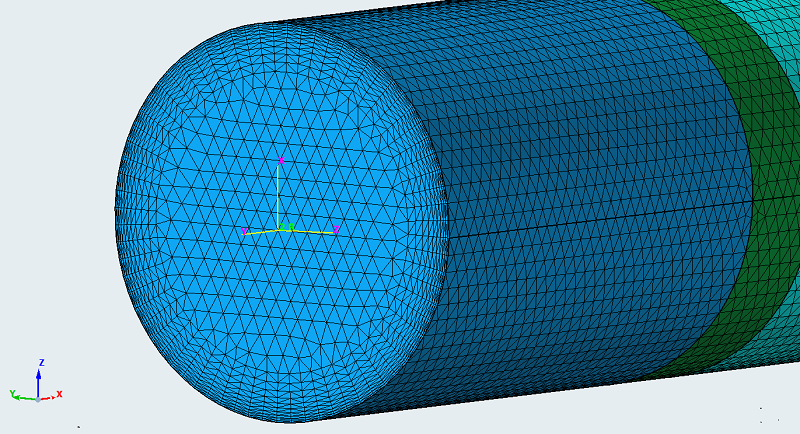
- Use the default Global option
if the body is aligned with Global coordinate
system.
- Porous Media Definition in Cylindrical Coordinate
SystemThe porous media can be defined in Cylindrical coordinate system by following the below steps:
- Create a local coordinate system of type Cylindrical.
- Select this local coordinate system in the Porosity panel.
- Enter the permeability values for Radial, Axial and Tangential components.
- Enter the Darcy and Forchheimer coefficients.
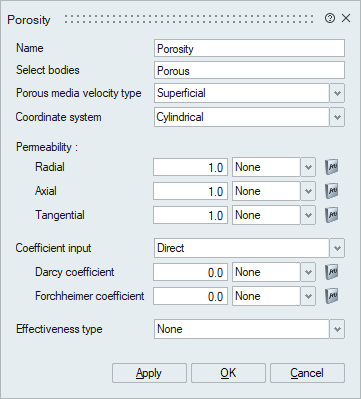
When a Cylindrical coordinate system is selected, the permeability options change to Radial, Axial and Tangential components.
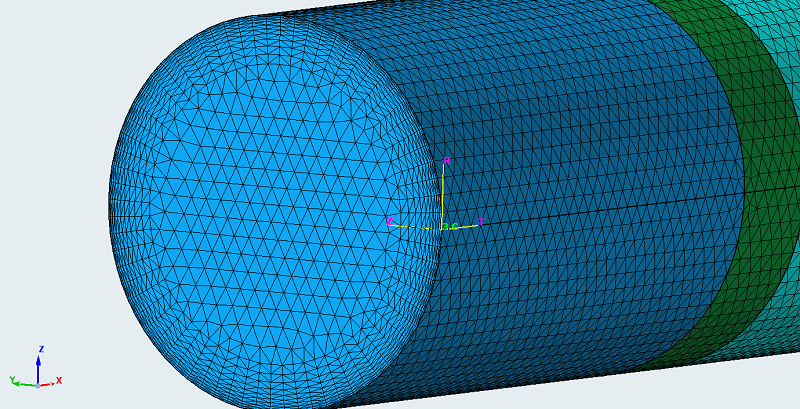
- Porous Media Definition in Spherical Coordinate
SystemThe porous media can be defined in Spherical coordinate system by following the below steps:
- Create a local coordinate system of type Spherical.
- Select this local coordinate system in the Porosit panel.
- Enter the permeability values for Radial and Tangential components.
- Enter the Darcy and Forchheimer coefficients.

When a Spherical coordinate system is selected, the permeability options change to Radial and Tangential components.
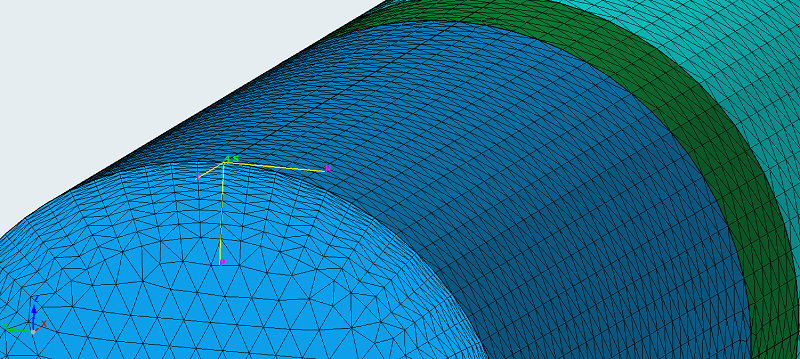
- Porous Media Definition in Cartesian Coordinate
System
- Darcy and Forchheimer Coefficients
The Darcy-Forchheimer porosity model is used to model the porous medium with type constant. The porous media forces for this model that modifies the momentum equation are given by:

Where µ is the viscosity, the index i refers to one of the principal orthogonal directions, Cdarcy and Cforch are linear and quadratic coefficients of the porosity model, given by Darcy coefficient and Forchheimer coefficient and ki is the permeability in the principal direction i. The multiplier function can be used to uniformly scale the coefficient values.
- Coefficient inputThe Darcy-Forchheimer coefficients can be applied using 2 methods.
- Direct: Direct input for the coefficients is given.
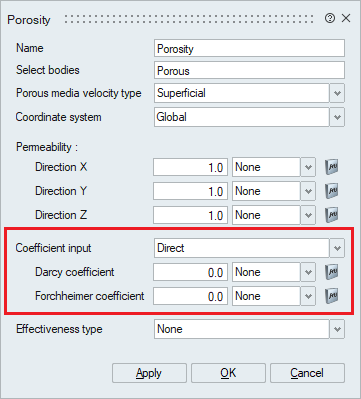
- Velocity Vs Pressure Drop: The coefficient values are calculated based
on the velocity vs pressure drop curve. In addition to curve
data, parameters such as the thickness of porous media and the
viscosity and density of the fluid are required for computing
the model coefficients. While the thickness of the porous media
needs to be directly specified, the fluid properties used for
the computation will be based on the material assigned.
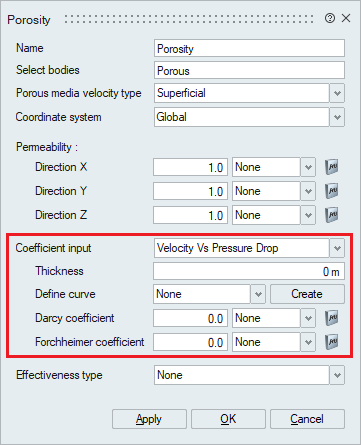
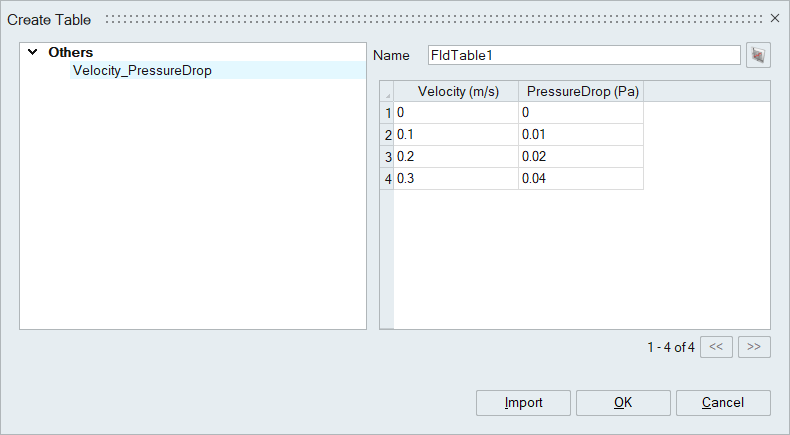
- Direct: Direct input for the coefficients is given.
Multiplier function
The multiplier function can be used to provide inputs that vary with time and uniformly scale the permeability values.
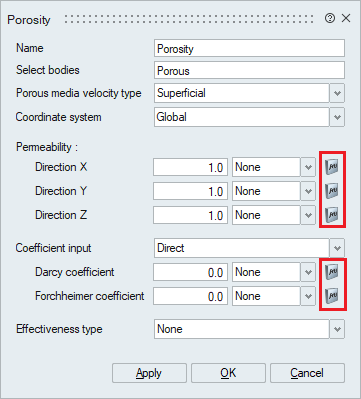
Effectiveness type
The effectiveness is defined as the flow resistance exerted by the porous medium.
If the effectiveness type is set to Constant, then a constant value of effectiveness for the porous media should be provided. By default, the value is 1 which indicates 100% effectiveness.
If the effectiveness type is set to Piecewise Linear, then effectiveness can be made temperature-dependent to model freezing and melting.
